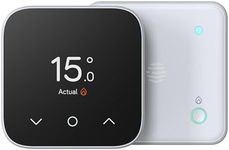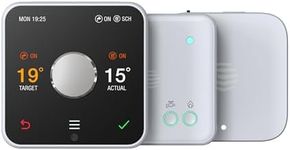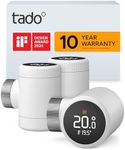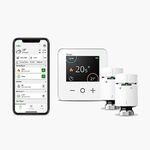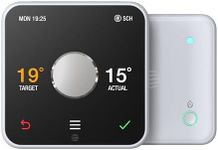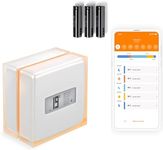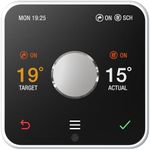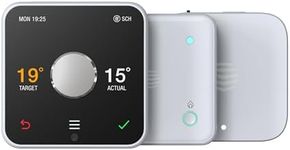Buying Guide for the Best Smart Thermostats
When choosing a smart thermostat, it's important to consider how it will integrate with your home and lifestyle. Smart thermostats can help you save energy, increase comfort, and provide convenience by allowing you to control your home's temperature remotely. To find the best fit, think about your heating and cooling needs, the compatibility with your existing HVAC system, and the smart features that will benefit you the most. Understanding the key specifications will help you make an informed decision.CompatibilityCompatibility refers to whether the smart thermostat can work with your existing heating and cooling system. This is crucial because not all thermostats are compatible with every type of HVAC system. Systems can vary from central heating and cooling to heat pumps, and more. To navigate this, check your current system's specifications and compare them with the thermostat's compatibility list. If you have a complex system, you might need a more advanced thermostat. For simpler systems, a basic model might suffice.
ConnectivityConnectivity is about how the thermostat connects to your home network and other smart devices. This is important for remote control and integration with smart home ecosystems. Most smart thermostats connect via Wi-Fi, but some may also use Bluetooth or other protocols. Consider your home network's reliability and the smart devices you already own. If you have a robust smart home setup, look for a thermostat that integrates well with your existing devices. If you're just starting, a basic Wi-Fi connection might be all you need.
User InterfaceThe user interface is the way you interact with the thermostat, either through a touchscreen, app, or voice control. A good interface is important for ease of use and accessibility. Touchscreens offer direct interaction, while apps provide remote access and additional features. Voice control can add convenience if you use smart speakers. Consider how you prefer to interact with technology. If you like hands-on control, a touchscreen might be best. If you value remote access, ensure the app is user-friendly.
Energy-Saving FeaturesEnergy-saving features help reduce your energy consumption and lower utility bills. These features can include learning algorithms, scheduling, and geofencing. Learning algorithms adapt to your habits over time, while scheduling allows you to set specific times for heating or cooling. Geofencing uses your phone's location to adjust settings when you leave or return home. Think about your lifestyle and how much control you want over your energy use. If you have a predictable routine, scheduling might be enough. For more dynamic lifestyles, learning algorithms and geofencing can offer greater savings.
Integration with Smart Home SystemsIntegration with smart home systems refers to how well the thermostat works with other smart devices and platforms like Amazon Alexa, Google Assistant, or Apple HomeKit. This is important for creating a seamless smart home experience. If you already use a specific platform, ensure the thermostat is compatible with it. If you're planning to expand your smart home, consider a thermostat that supports multiple platforms. This will give you flexibility and future-proof your setup.
InstallationInstallation involves the process of setting up the thermostat in your home. This is important because it affects how quickly and easily you can start using your new device. Some thermostats are designed for DIY installation, while others may require professional help. Consider your comfort level with home improvement projects. If you're handy, a DIY-friendly model might be suitable. If not, or if your system is complex, professional installation could be the best choice to ensure everything works correctly.


